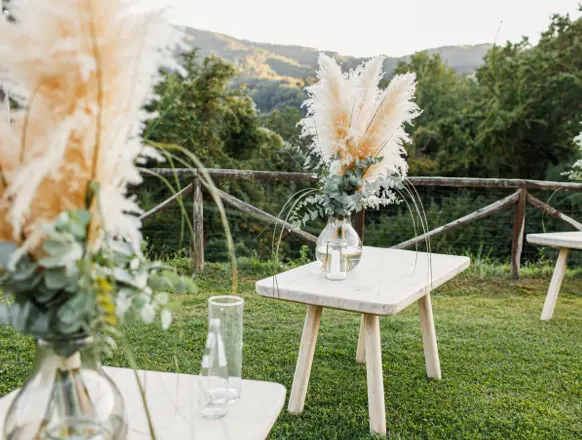How to Create an Inviting Garden for Pollinators in North Texas
Pollinators like monarch butterflies, swallowtails, bees, and hummingbirds are essential to maintaining healthy ecosystems and ensuring successful plant reproduction. In North Texas, where the climate can be hot and dry, creating a pollinator-friendly garden not only benefits these crucial creatures but also brings life and beauty to your outdoor space.
Here’s how you can design a vibrant, inviting garden that attracts and supports pollinators like monarchs and swallowtails in the North Texas region.
1. Choose Native Plants for Long-Term Success
Native plants are the backbone of any successful pollinator garden. They are well adapted to local conditions, including the extreme heat and periods of drought often experienced in North Texas. Native plants also provide the specific nectar and pollen sources that local pollinators need to thrive.
Top Native Plants for Pollinators in North Texas:
- Milkweed (Asclepias spp.) – Essential for monarch butterflies, whose caterpillars feed exclusively on milkweed. Popular varieties include butterfly milkweed (Asclepias tuberosa) and swamp milkweed (Asclepias incarnata).
- Purple Coneflower (Echinacea purpurea) – A hardy, drought-tolerant plant that provides nectar for butterflies and bees while adding bold color to your garden.
- Texas Lantana (Lantana urticoides) – A favorite among swallowtails and other butterflies, lantana thrives in heat and attracts a wide variety of pollinators.
- Indian Blanket (Gaillardia pulchella) – This vibrant wildflower attracts bees and butterflies and blooms from spring through fall, offering a consistent food source.
- Salvia (Salvia spp.) – Salvias, such as Mealy Blue Sage (Salvia farinacea) and Autumn Sage (Salvia greggii), are hummingbird magnets and provide nectar for butterflies.
2. Incorporate Host Plants for Butterfly Larvae
While nectar plants are important for adult butterflies, host plants—where butterflies lay their eggs and larvae feed—are crucial for supporting their life cycle. Monarchs, for example, rely on milkweed as a host plant. Swallowtail butterflies use a variety of plants, including those from the carrot family.
Essential Host Plants:
- Milkweed (Asclepias spp.) – As mentioned earlier, this is a critical host plant for monarch caterpillars.
- Fennel (Foeniculum vulgare) – Swallowtail butterflies, especially the Eastern black swallowtail, lay their eggs on fennel, and their caterpillars feast on the leaves.
- Parsley (Petroselinum crispum) – Another excellent host plant for black swallowtails.
- Dill (Anethum graveolens) – Black swallowtails also love dill for both laying eggs and feeding their larvae.
3. Provide Year-Round Blooms
Pollinators are active throughout much of the year in North Texas, so it’s important to ensure your garden provides nectar and pollen sources from early spring to late fall. Planting a mix of early-, mid-, and late-blooming flowers ensures that there’s always something in bloom for pollinators.
Plants for Every Season:
- Spring Bloomers: Bluebonnets (Lupinus texensis), spiderwort (Tradescantia spp.), and coral honeysuckle (Lonicera sempervirens).
- Summer Bloomers: Black-eyed Susan (Rudbeckia hirta), bee balm (Monarda citriodora), and Mexican sunflower (Tithonia rotundifolia).
- Fall Bloomers: Goldenrod (Solidago spp.), asters (Symphyotrichum spp.), and frostweed (Verbesina virginica).
4. Create a Pollinator-Friendly Habitat
Beyond just planting the right flowers, you can make your garden a haven for pollinators by providing other essential resources like water, shelter, and nesting sites.
Tips for a Pollinator Habitat:
- Water Sources: Set up shallow dishes with pebbles or a birdbath where butterflies and bees can land and sip water safely.
- Avoid Pesticides: Pesticides, especially those containing neonicotinoids, can harm pollinators. Opt for organic gardening methods to keep your plants and pollinators safe.
- Shelter: Include tall grasses, shrubs, and small trees to provide shelter from wind and predators. Native plants like Eastern Red Cedar and yaupon holly are excellent options.
- Nesting Sites: Leave a few undisturbed areas in your garden, such as patches of bare ground or old wood, to give ground-nesting bees and other pollinators places to nest.
5. Attract Hummingbirds with Nectar-Rich Plants
Hummingbirds are not only fun to watch but also important pollinators. Adding hummingbird-friendly plants to your garden will help attract these tiny birds and provide them with the energy they need during their migrations.
Plants Hummingbirds Love:
- Coral Honeysuckle (Lonicera sempervirens) – This native vine produces tubular flowers perfect for hummingbirds.
- Turk’s Cap (Malvaviscus arboreus) – A shade-tolerant plant that blooms profusely, providing nectar for both hummingbirds and butterflies.
- Red Yucca (Hesperaloe parviflora) – This drought-tolerant plant blooms all summer long with bright red, tubular flowers.
- Trumpet Vine (Campsis radicans) – Known for its large, trumpet-shaped flowers, this vine attracts hummingbirds with ease.
6. Design a Butterfly Migration Rest Stop
North Texas is part of the migratory route for monarchs. By planting milkweed and other nectar-rich plants, you can provide a much-needed pit stop for these butterflies as they make their incredible journey. Late-blooming flowers like frostweed and asters are particularly important for monarchs in the fall when they need to fuel up for their migration to Mexico.
Conclusion
Creating an inviting pollinator garden in North Texas is both rewarding and crucial for supporting butterflies, bees, and hummingbirds. By planting native flowers, providing host plants, and offering shelter and water, you can turn your garden into a thriving haven for monarchs, swallowtails, and other essential pollinators. Plus, you’ll get to enjoy the beauty of these vibrant creatures as they bring your garden to life!
Tags
SHARE THIS POST
Related Articles

Conditioning Herbs
The Importance of Conditioning Herbs in Boiling Water to Prevent Wilting in Bouquets

DIY Flowers for Your Dream Wedding
Craft exquisite floral arrangements for your wedding day, infused with love and creativity.

Best Foliage for Summer Bouquets: A Guide to Fresh Greens
Summer is the season of abundance, with gardens bursting with vibrant flowers, aromatic herbs, and lush greenery. One often overlooked aspect of floral design is




